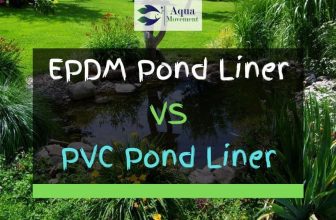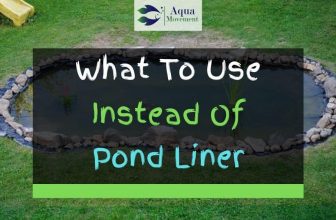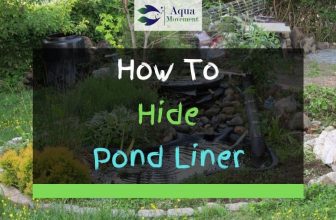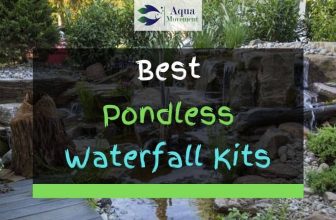What Do Koi Fish Eat? (Koi Fish Feeding Tips)
Universally, all pet owners want to make sure their beloved animals led the healthiest, happiest lives possible. This includes giving them a stimulating, immersive environment, regular health checkups, and cleaning out their habitats.
But diet is another factor which could seriously impact your pet’s health and well-being. This is true most especially with fish.
The correct diet can be the difference between a healthy fish which thrives in its ecosystem, and an unhealthy, malnourished creature which is at risk of dying prematurely.
It is important to understand your fish’s own dietary needs and requirements, and to tailor your feeding regiment accordingly. Koi fish need a certain balance of the right vitamins and nutrients to ensure they keep their strength and vitality.
The influence of diet on fish behavior and general health has been known for years, and special formulations have been developed for almost every type of fish.
Of course, there are plenty of resources to find out what do koi fish eat. For example, you could join a pet owners’ group or forum, scour the web, or ask your local animal expert or pet shop.
But we have assembled a one stop shop for all you need to know about what do koi fish eat, and the best ways to feed them.
Table of Contents
What are Koi fish?
In recent years, Koi fish have boomed in popularity among ornamental aquarium owners and fish enthusiasts alike. Koi fish are a specific variety of carp, which have a very distinctive coloring and appearance. They are extremely common in high class, decorative outdoor koi ponds or water gardens.
Although it has recently become very common and recognizable in the west, originally Koi fish were native to Japan, and they occupy a very special place in Japanese culture. It is closely linked to Japanese national identity, and is widely considered to be a symbol of luck and good fortune, much like the shamrock in Western culture.
Koi fish have very distinct coloring and patterning. Some of the most common colors are white, black, orange, red, blue and yellow. They also have a large mouth and prominent barbels on their lips. They can grow up to 2 cm a month and the average length is over 3 feet.
They also have a very long lifespan. In the right conditions and if well cared for, then koi fish can live to well over 100 years, an incredible feat! In fact, the oldest known koi fish is reported to have been 226 years old!
This shows the staggering importance of correct environment and diet in caring for your fish.
Feeding Habits
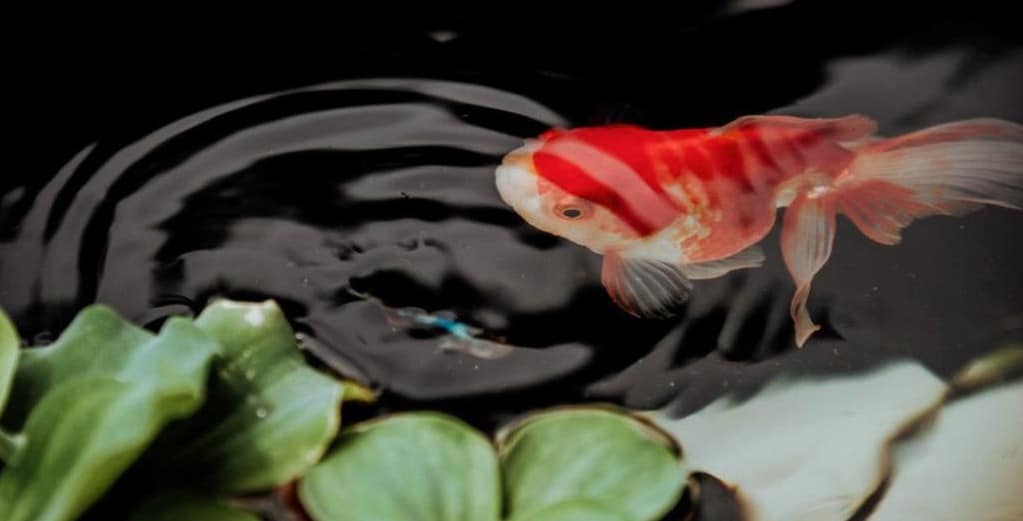
To really learn what do koi fish eat, it is important to recognize their feeding habits, and to feed them accordingly. It is also important to tailor these recommendations to your individual circumstances based on when you are available, how much fish you have etc.
Most importantly, remember that keeping Koi fish is a big undertaking, so you must be prepared to dedicate the time and effort to look after them properly!
First of all, you should know that regular feeding in limited amounts is better than irregularly feeding them large amounts. You should feed your fish up to four times per day. To gauge how much you should feed them each time, remember to feed them no more than they can comfortably eat in a fish minute period.
Overfeeding can become a major problem, for a few reasons. Not only can the fish become unhealthy, but excess food may fall to the bottom and become waste and detritus. This can draw harmful algae and bacteria to the pond, which can lead to very unhealthy conditions for your fish.
One of the other advantages of feeding your fish consistently is that they will begin to recognize you. They will then happily approach you as you come near the pond, which is a very gratifying experience.
Even though Koi are sometimes accused of having a very bad memory, this is clearly not the case when it comes to their patrons and feeders!
When to feed
It is important to recognize that Koi fish need large amounts of oxygen to digest and metabolize their food. Thus, you should only feed them when you are sure there is plenty of dissolved oxygen available in the water, for them to do this. So, you shouldn’t feed your fish right before a storm, or when the aerator in your pond is out of action.
Also, feeding is fair less important throughout the winter, when the cold conditions mean that the fish’s metabolism slows then hugely. You should reduce the amount you give them accordingly. In fact, below about 48 F, koi fish’s metabolisms essentially come to a standstill, and you should not feed them again until the cold months pass.
Similarly, in very hot weather, because the oxygenation level of the water is lower, you should drastically reduce what you feed your fish.
As always, you should carefully read the manufacturer’s instructions on any food products you use, but these are just some general hints.
What do Koi fish eat?
Koi fish eat a wide variety of different foodstuffs, but there are some common things to look out for in any products you use or purchase.
Koi fish are omnivores; this means they will eat both plants and other animals. As a matter of fact, they will eat just about anything they can fit in their mouths!
Balanced Koi fish diets tend to reflect the kind of things they naturally eat in the wild. This includes algae, plants and insects.
The fish need a good, hearty balance of proteins and plants to stay strong and thrive.
As well as that, supplemental vitamins and minerals, possibly from other sources, can help your fish to develop vibrant colors that fish owners love.
As a general rule, koi fish tend to like carbohydrate rich foods in the spring and autumn, and lots of protein in the summer, as this is mating season. You can adjust your feeding regimen seasonally.
Floating or sinking
Although there is a huge variety of food types that you can feed koi, most items can be categorized into one of two types; floating food or sinking food.
As the name suggest, floating food floats! This is an extremely common food type as it forces the koi to come to the surface for food, which delights the fish owners. Not only is it super fun, but is also presents a good opportunity to observe your fish and monitor them for any obvious health problems. It’s also easy to observe which fish aren’t eating their proper share.
The only downside of floating food is that it can be taken into the pond’s filter before the fish get a chance to eat it, but you can avoid this by just being extra careful.
On the other hand, using sinking food does not give you the same chance to observe your fish and check them for illness or injury. However, this is a more natural and efficient way of feeding koi, since this is how they feed in the wild.
As a result, they consume more of the food you give them, and there is far less waste. This reduces costs for you, the owner, and reduced the amount of waste in the pond, which improves the overall ecosystem conditions.
You should carefully weigh up the advantages and disadvantages of using floating food or sinking food before deciding what to use.
Varieties of Food
There is a great abundance of food types on the market. Most of the ‘complete foods’ that are sold are based around a handful of ingredients, which are outlined here.
Spirulina algae
[amazon box=”B00025Z6K2″]
In the wild, algae is one of the most common things for koi fish to feed on. This particular type of algae has a blue-green hue and is farmed from hard, high pH waters.
It has been observed that this food has a lot of benefits for the Koi, including boosting their immune system and increasing their growth rate. As a result, it is ideal for starting your koi pond, and is easily digested even by small fish.
Wheat germ
[amazon box=”B00025Z6HU”]
This germ is the back bone of many complete koi fish diet products, as it is energy dense and relatively cheap to produce. It is the seed of the wheat plant, and helps the fish grow fast.
It contains a healthy cocktail of vitamins and minerals for your fish, including the all-important vitamin E, which is necessary for good circulation and immune systems.
It has been noted that Koi fish need different diets in the summer and the spring/fall. In the cooler months, koi need less protein and more fat filled foods to keep them warm.
Wheat germ is perfect for these cooler conditions, as it is easy for them to digest and helps them prepare for hibernation during the long winter months.
Brine shrimp
[amazon box=”B0043T75RK”]
This is a common fish food ingredient, not just for koi fish, but for many types of aquarium fish. They are protein filled, so you should choose food rich in this ingredient during the summer months when koi fish are active and mobile. As well as that essential protein, brine shrimp contains a mass of important nutrients that help build up their immunity and bring out their most splendid colors.
You should also consider feeding this to very young, freshly hatched koi. Young koi need lots of protein to fuel their growth and brine shrimp is a perfect way to provide this.
There are lots of different brands providing koi fish, but most of them will consist of food based around these three staples. They might also include some additives for things such as vitamin C.
Koi fish food is usually provided in pellet form, but it is also available in stick and flake form. Many formulations are specially designed to promote color in your fish or lower their stress levels.
Some of the big names in this market include API Fish Food, Danichi and Tetra Pond.
Treats for Koi fish
When people ask, ‘what do koi fish eat’, they are often really wondering, what special treats can I give my fish?
Thankfully, like most pets, koi fish adore treats, and it can be equally fun for the owner to give them. Treats that Koi fish love to munch on include fruit, vegetables, and even some meats.
There are many types of fruit that koi fish will happily eat. For instance, you could feed them some juicy orange slices, grapes or pineapple pieces. They are usually packed full of vitamins which will help boost your fish’s immune system and keep them healthy throughout the lean months.
Some fish may be reluctant to try new fruit at first, but usually once they try it once they get a taste for it and love it! You should cut up fruit into small pieces to aid their digestion.
Vegetables
The same is true of vegetables. Most koi fish will happily eat some lettuce, sprouts or garlic. Garlic is a special favorite, as its intense smell usually attracts the koi fish, and they will soon start ripping the cloves apart.
Meat is another lovely treat to feed your koi fish. As omnivores, they require more protein during the hot summer months, and some extra meat is a great, and fun, way to provide this.
For example, you could toss them some shrimp or worms. They will eat them either dead or alive, but adding live food gives them extra stimulation.
You should avoid giving your koi fish any treats which might be hard for them to digest. One of the worst things to feed your fish is white bread, as this carbohydrate filled food can get stuck in their gullet and also be very hard for them to process.
Also, avoid giving them anything which is likely to introduce disease or parasites into your pond, as this can quickly overwhelm the local ecosystem.
Conclusion
Hopefully you now know, what do koi fish eat. You should feed them a balanced diet of proteins, vitamins and minerals, at regular intervals, and adjusted according to the season.
You can also spice it up with some extra treats from time to time! Have fun feeding!

